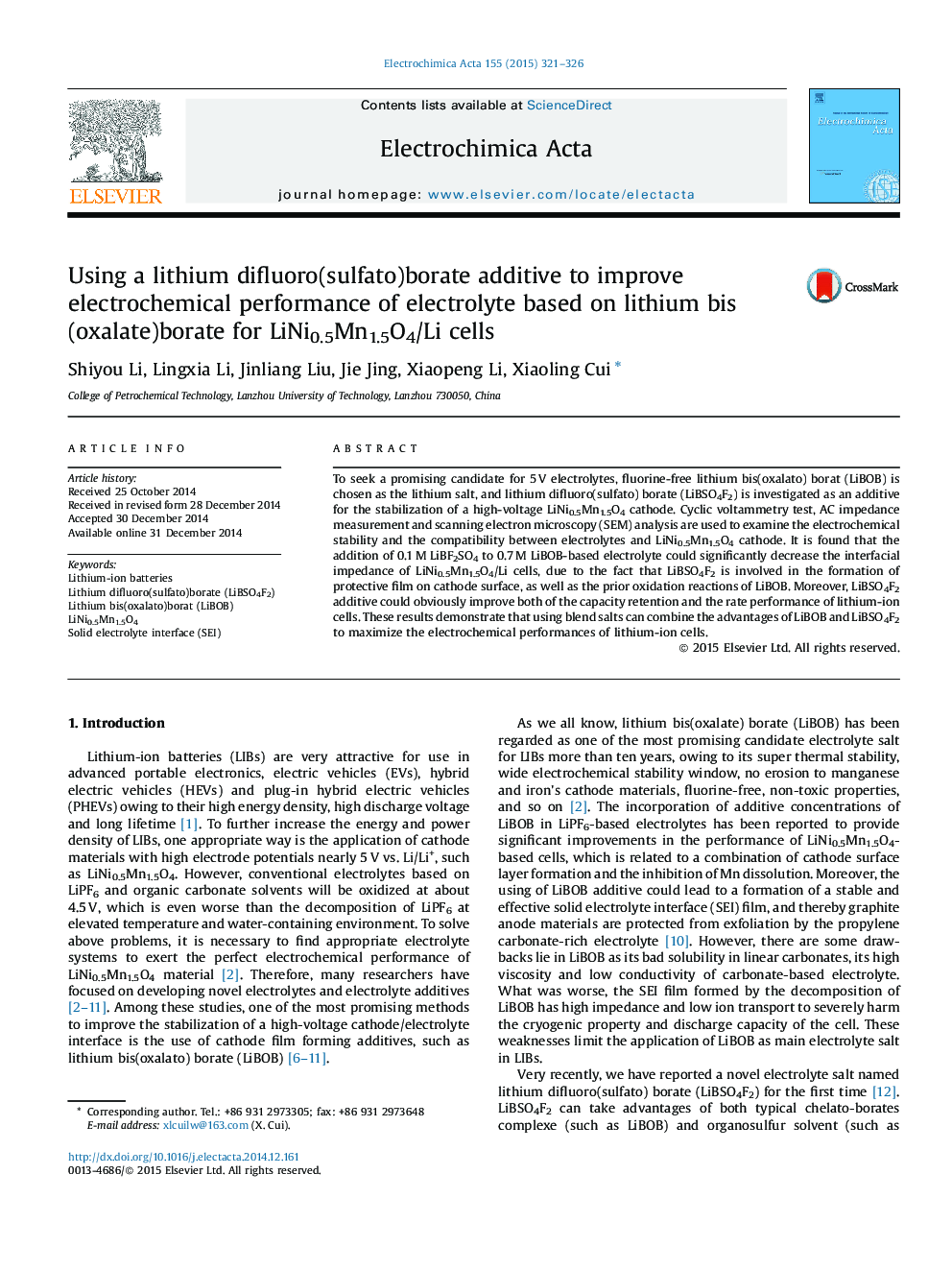| کد مقاله | کد نشریه | سال انتشار | مقاله انگلیسی | نسخه تمام متن |
|---|---|---|---|---|
| 184581 | 459578 | 2015 | 6 صفحه PDF | دانلود رایگان |

• A novel salt of LiBSO4F2 is used as an functional electrolyte additive.
• Electrolyte with LiBSO4F2 has high stability against oxidation decomposition (∼5.6 V).
• LiBSO4F2 additive could decrease the interfacial impedance of LiNi0.5Mn1.5O4/Li cells.
• LiBSO4F2 additive could improve electrochemical performance of LiNi0.5Mn1.5O4/Li cells.
To seek a promising candidate for 5 V electrolytes, fluorine-free lithium bis(oxalato) borat (LiBOB) is chosen as the lithium salt, and lithium difluoro(sulfato) borate (LiBSO4F2) is investigated as an additive for the stabilization of a high-voltage LiNi0.5Mn1.5O4 cathode. Cyclic voltammetry test, AC impedance measurement and scanning electron microscopy (SEM) analysis are used to examine the electrochemical stability and the compatibility between electrolytes and LiNi0.5Mn1.5O4 cathode. It is found that the addition of 0.1 M LiBF2SO4 to 0.7 M LiBOB-based electrolyte could significantly decrease the interfacial impedance of LiNi0.5Mn1.5O4/Li cells, due to the fact that LiBSO4F2 is involved in the formation of protective film on cathode surface, as well as the prior oxidation reactions of LiBOB. Moreover, LiBSO4F2 additive could obviously improve both of the capacity retention and the rate performance of lithium-ion cells. These results demonstrate that using blend salts can combine the advantages of LiBOB and LiBSO4F2 to maximize the electrochemical performances of lithium-ion cells.
Journal: Electrochimica Acta - Volume 155, 10 February 2015, Pages 321–326